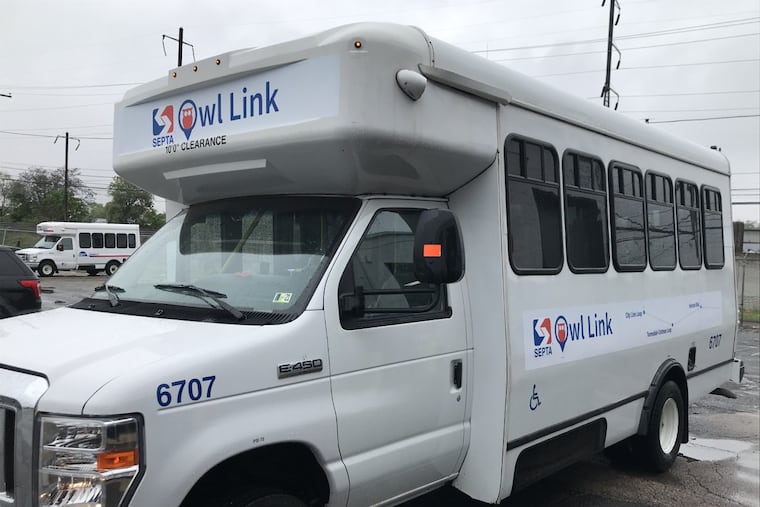Philly suburbs are getting Uber-like rideshare by SEPTA to fill suburban gaps in bus service
New “microtransit” zones would give suburban riders an option where traditional bus service isn’t cost effective.

No, a “microtransit zone” is not some mythical land of tiny buses and trains.
It’s an on-demand rideshare service, public transportation’s answer to Uber or Lyft, that SEPTA plans to use to cover areas in the Philadelphia suburbs where a traditional fixed bus route doesn’t make economic sense but people still want a transit option.
The proposal is part of the ongoing comprehensive redesign of SEPTA’s bus system, which involves adding more frequent service to thriving bus routes with growth potential by shifting it — and the cost — away from little-used routes.
In nine zones, riders would use a mobile app or call center to book a point-to-point ride anywhere in the same zone, at least 30 minutes before their trip, SEPTA says. Shuttles or vans would take the place of the usual 40-foot bus and, in many cases, you’d share the vehicle with others.
Each proposed zone has one or more connections to regular bus routes that can get a rider to regional transit hubs, SEPTA says. In some cases, riders would have access to Regional Rail stations in their zone.
The transit agency has said rides on the smaller vehicles will cost the same as a regular bus fare, currently $2.50. Microtransit vehicles would be accessible to wheelchair users, officials said.
Where would SEPTA’s on-demand zones be?
Lower Bucks County
One zone is planned to cover Bristol-Croydon-Cornwells Heights, with connections to Regional Rail, and another to cover Bristol-Levittown-Fairless Hills, with links to other bus routes at the Oxford Valley Mall.
Chester County
In Paoli and Great Valley, the zone would provide travel in off-peak hours and also connect to Regional Rail and bus service to Paoli and Malvern.
West Chester’s zone is envisioned as a community circulator, replacing the low-ridership Route 92 bus. Riders could also transfer to SEPTA bus Routes 104 and 135 at the West Chester Transportation Center.
Microtransit would also exist for travel around Phoenixville, Spring City and Royersford, with connections to buses serving Norristown, King of Prussia and Pottstown.
Delaware County
Delco would have one on-demand zone covering Painter’s Crossing and Cheyney University.
Montgomery County
Microtransit would run in and around Phoenixville, Telford and Norristown
Has microtransit been tried elsewhere?
About 100 microtransit systems are operating in 40 states, with varying degrees of success, in cities of all sizes, ranging from Pflugerville, Texas, to Los Angeles. Transit agencies use the service to try to fill gaps in their networks.
Jersey City, N.J., said more than 1 million rides were taken on its microtransit service from February 2020 through August 2022, boosting ridership on its transit system overall. About half the trips were taken by low-income riders and 40% originated within 300 feet of affordable housing, the city said.
Some agencies contract with companies like Via, a microtransit firm, or Uber, which now runs on-demand and paratransit services for transit agencies. Other cities run their own.
Some transit experts say the subsidies needed to keep microtransit fares cheap for riders means the service often can’t pay for itself, and in most cases, it is unlikely to increase ridership as successfully as fast, frequent fixed-route services.
SEPTA began experimenting with one form of microtransit in May 2021, running an overnight, on-demand shuttle called Owl Link to provide “last-mile” service for late-shift workers whose job sites in Lower Bucks County were just out of reach of fixed SEPTA bus and Regional Rail routes.
But the program ended 10 months later. Ridership peaked at 10 to 12 passengers a night, roughly four times lower than projected, SEPTA officials said.